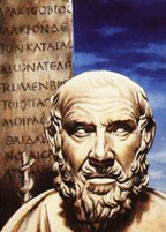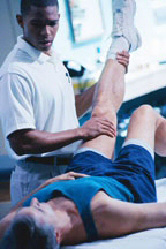|
A Brief History of Massage
(The Mother of Medical Care -
see the spiral
timeline)
 |
Massage is an intuitive healing art that has been around for
millennia. Massage therapy is based on our instinct to rub areas
that hurt. We rub our belly when our stomach aches, parents rub
their children when they scuff themselves and mothers rub and rock
their infants when they cry. Massage therapy is a field that takes
that very basic principle and evolves it into a science. The word
‘massage’ comes to us from the Arabic root “mass’h” which means to
touch, knead or squeeze.
|
Many believe that massage therapy is the precursor to all other forms of
manual therapy; including physical therapy, chiropractic and orthopedics. The
oldest written record of massage is approximately 4000 years old. It was found
in a Chinese medical text, Con-Fu of the Toa-Tse, dated at about 1800 BC. These
early accounts detailed the application of massage techniques for therapeutic
purposes.
Specific massage modalities, such as Reflexology, have been depicted in Egyptian
hieroglyphs (see illustration) as forms of hand and foot therapy. This
particular pictograph was found in the tomb of Ankmahor, thought to have been
the physician to the Pharoah. Unfortunately, much of the healing knowledge and
wisdom of the ancients has been lost through the passage of time.
| In our own western tradition, starting with the Greeks, one
finds deep roots for the validity of massage therapy in the medical
world. Hippocrates of Cos (460 to 380 B.C.), generally accepted as
the ‘father of medicine’ and author of the Hippocratic Oath, wrote
in his memoirs, “The physician must be experienced in many things
but assuredly also in rubbing (anatripsis); for things that have the
same name have not always the same effects. For rubbing can bind a
joint that is too loose and loosen a joint that is too rigid.…
Rubbing can bind and loosen; can make flesh (referring to the
ability to tone muscle tissue) and cause parts to waste (soften and
relax).
Hard rubbing binds; soft rubbing loosens; much rubbing causes
parts to waste; moderate rubbing makes them grow.”
|
 |
|
 |
The Romans continued the Greek tradition culminating in the
learnings and teachings of Galen (130-201 AD). He wrote
several medical and philosophical volumes and is considered one of
the greatest medical historians and physicians of antiquity.
Before becoming a notable physician to a number of Emperors in the
first century AD, he spent several years ‘interning’ as physician to
the Gladiators of the Circus Maximus. He developed a complete
regiment for the application of massage techniques for diseases and
physical injuries. For all practical purposes, he was the original
innovator of what we would today call Sports Massage or Orthopedic
Massage.
On a less flattering point, Galen reveals in his book Hygiene how
deeply his feelings were towards massage and his disdain for those
who would lower the standards of the profession - in this case,
sexual – and lessen the meaning and purpose of its use. |
Upon overhearing a derogatory slur about his beloved profession, he wrote,
“These are all wanton witticisms, not at all befitting a man learned in so
august an art.” Unfortunately, this stereotype is a social stigma that has
carried on to this day. Europe turned away from the teachings of Hippocrates
and Galen during the Dark Ages. Conservative and repressive religious dogma
frowned upon any act that involved touching that felt pleasurable to the
recipient. These acts were unacceptable and often considered sinful. It wasn’t
until a Swede by the name of Pehr Heinrick Ling, stepped onto the world stage
that massage slowly regained its footing as a manual therapy. Coincidently, it
was his work with athletes, specifically gymnasts, that led to his development
and research of soft tissue technique that became known as Swedish Massage.
His work culminated in the establishment of the Royal Central Institute of
Gymnastics in 1813. He is generally regarded as the ‘father of modern massage.’
The techniques he developed are considered the foundation of all massage
therapeutic modalities:
- Effleurage – gliding or stroking
- Friction – rubbing or pressing
- Petrissage – squeezing or kneading
- Tapotement – striking, beating or percussion
- Vibration – oscillations on the skin
| Most recently, there has been an explosion of research,
development and interest in massage therapy. There are currently
over 70 massage modalities practiced in the United States. Among
them are Stone Massage, Pregnancy Massage, Shiatsu, Thai Yoga
Bodywork, Reflexology, Neuromuscular Therapy, Craniosacral
Therapy and Reiki (just to name a few).
The general public, through funding (AMTA
and FSMTA)
and researchers like
Tiffany Fields at the University of Miami,
is gradually sloughing off outdated stereotypes and dispelling
myths about massage. A growing number of Americans are not only
learning but enjoying the benefits of massage therapy performed
by qualified therapists.
Today, with the emergence of ‘preventative’ medicine and the
rising cost of health care, modalities such as massage,
chiropractic, acupuncture, nutrition, and yoga are no longer
‘alternative’ but rather a cornerstone of every American’s good
health practice. |
 |
|
